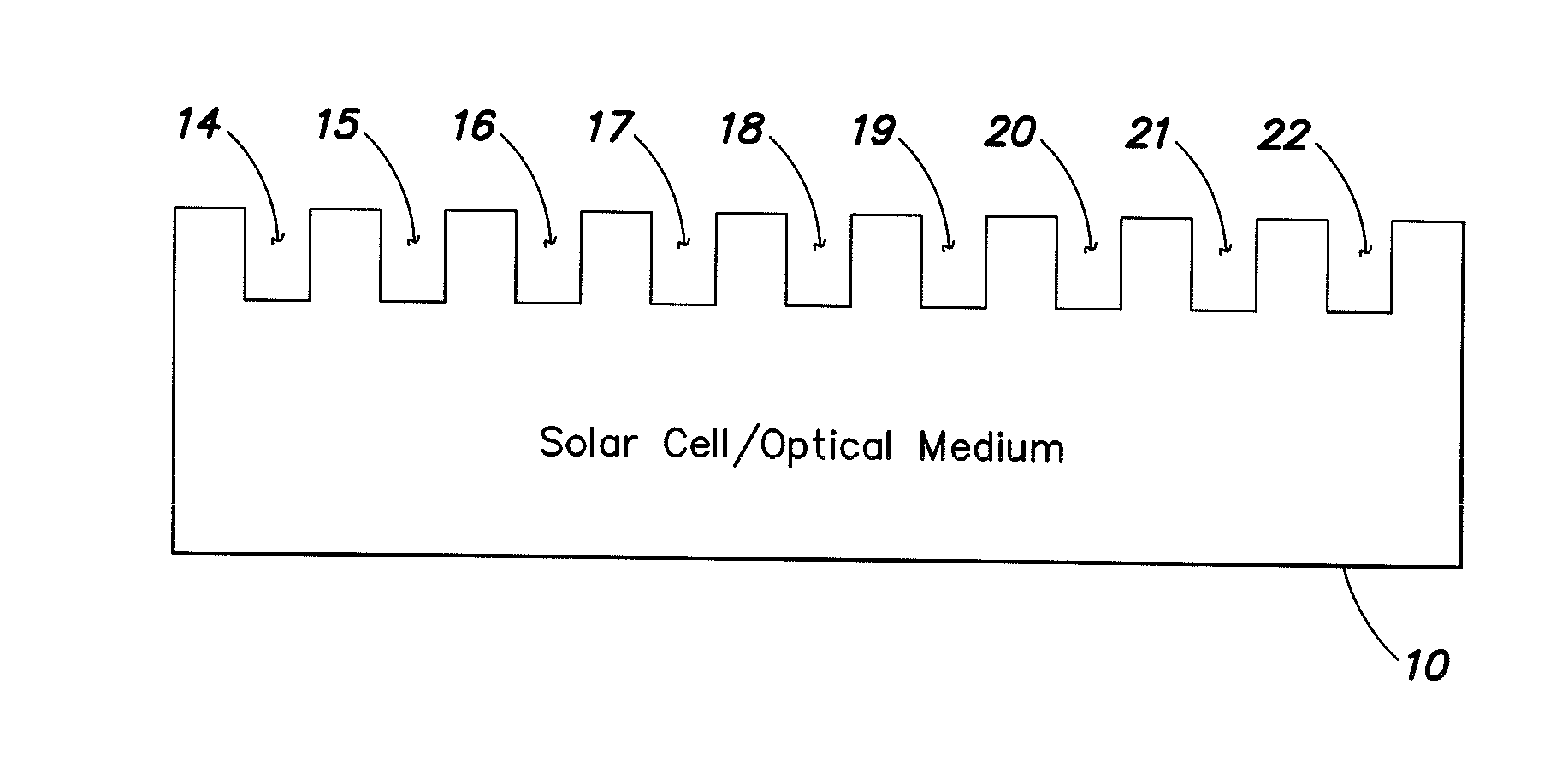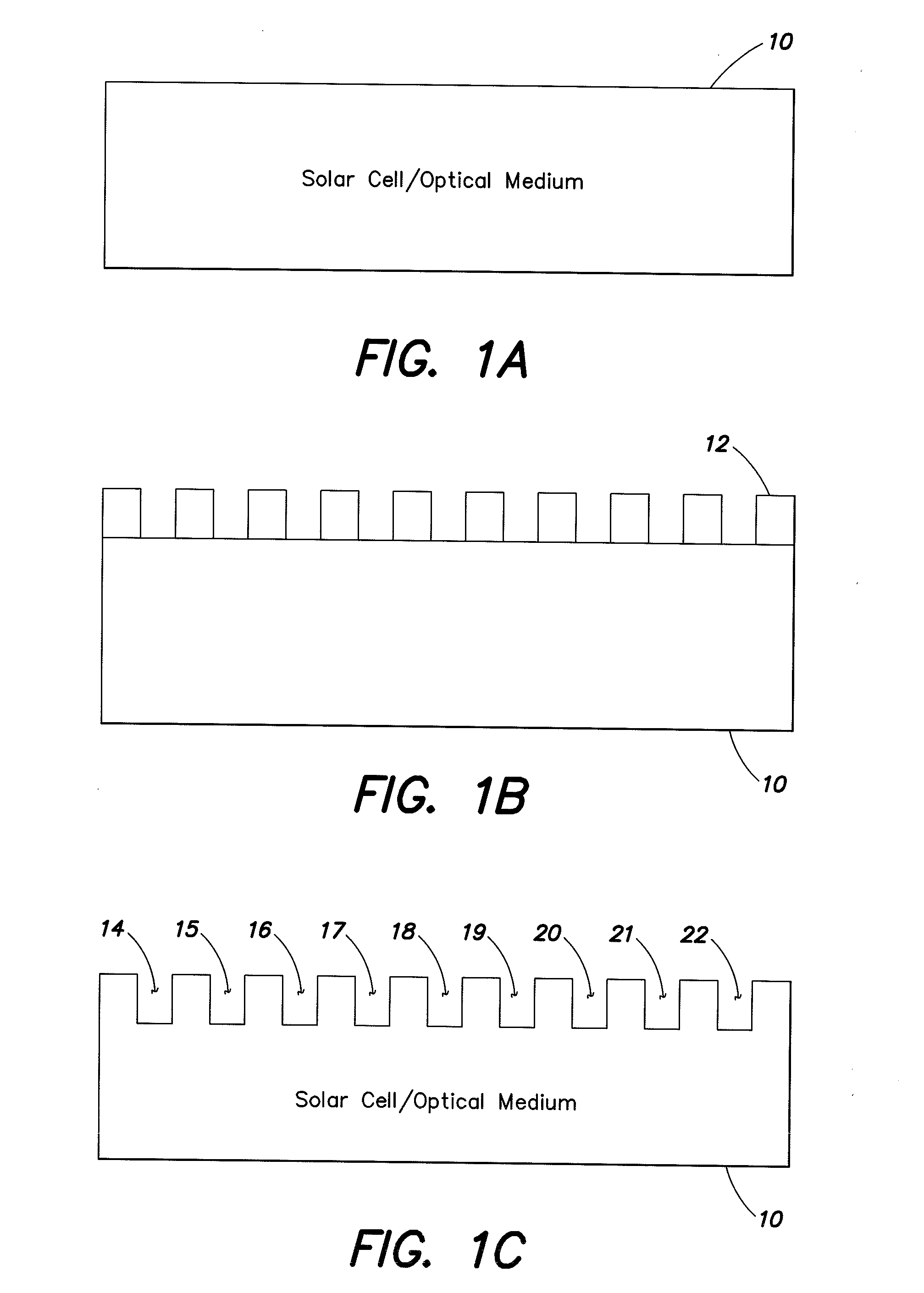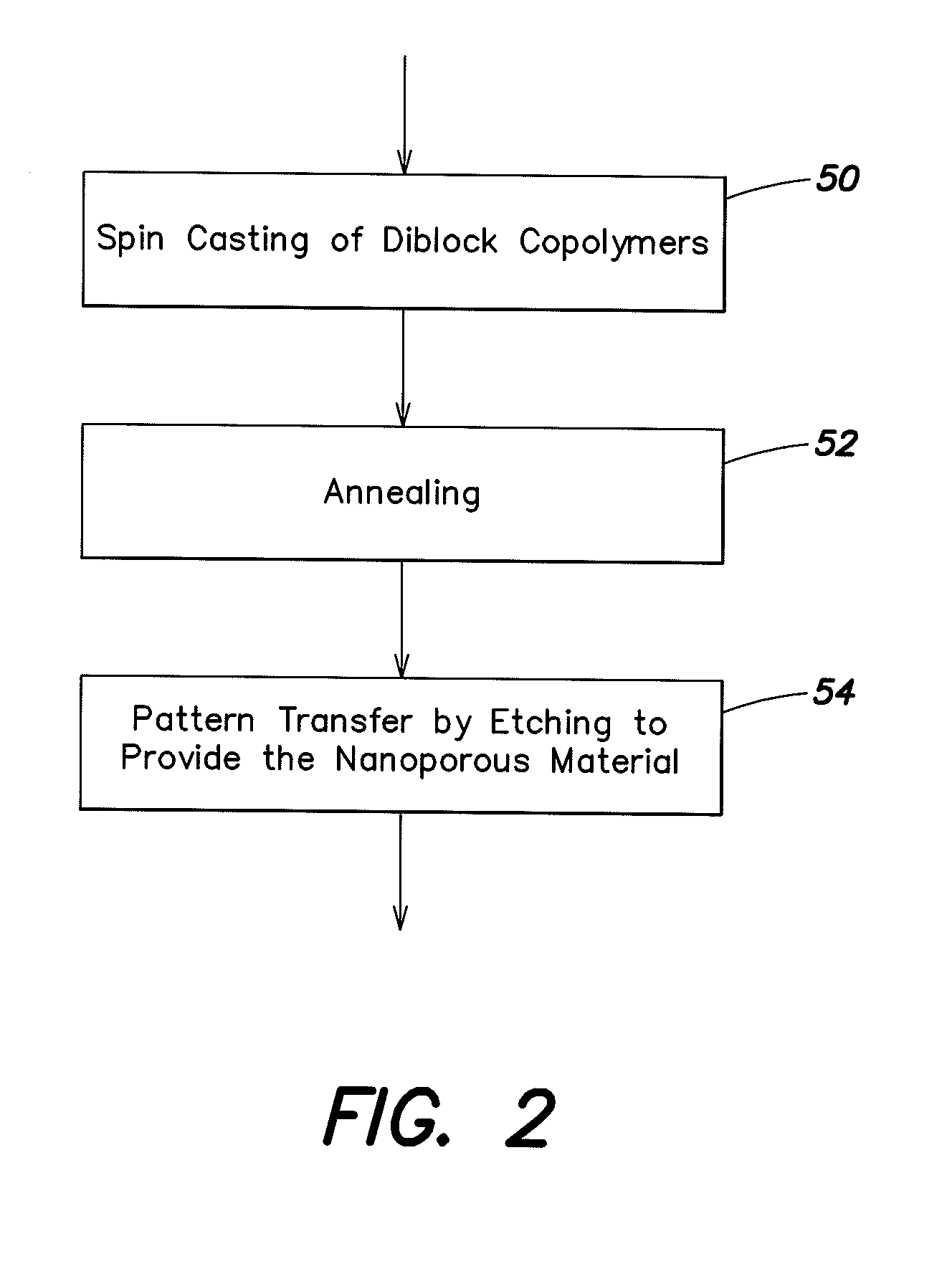Index tuned antireflective coating using a nanostructured metamaterial
a nano-structured metamaterial and anti-reflective coating technology, applied in the field of solar cells, can solve the problem of reducing the interfacial resistance of the top layer contact grid in the solar cell application, and achieve the effect of increasing the effective surface area of the top layer and reducing the interfacial resistance of the top layer contact grid
- Summary
- Abstract
- Description
- Claims
- Application Information
AI Technical Summary
Benefits of technology
Problems solved by technology
Method used
Image
Examples
Embodiment Construction
[0029]FIGS. 1A-1C pictorially illustrate a process of forming an antireflective layer according to an aspect of the present invention. FIG. 1A illustrates a cross section of a solar cell / optical medium 10 (e.g., Si, GaAs or InGaAs). As shown in FIG. 1B, a nanoporous etch mask 12 is applied to the optical medium 10. A etching agent (not shown) is then applied to create a nanoporous layer of a desired index of refraction and thickness, and the resultant structure is illustrated in FIG. 1C. As shown in FIG. 1C, a plurality of nanopores, for example 14-22, are etched into the optical medium 10 at a porosity that achieves the desired index of refraction and the desired depth. One of ordinary skill in the art will appreciate that the features are not drawn to scale in the interest of clarity and ease of illustration.
[0030]FIG. 2 is a flow chart illustration of the processing steps performed to achieve the index-tuned anti-reflective structure. In step 50, a thin film of a Diblock polymer ...
PUM
| Property | Measurement | Unit |
|---|---|---|
| Mass | aaaaa | aaaaa |
| Thickness | aaaaa | aaaaa |
| Structure | aaaaa | aaaaa |
Abstract
Description
Claims
Application Information
 Login to View More
Login to View More - R&D
- Intellectual Property
- Life Sciences
- Materials
- Tech Scout
- Unparalleled Data Quality
- Higher Quality Content
- 60% Fewer Hallucinations
Browse by: Latest US Patents, China's latest patents, Technical Efficacy Thesaurus, Application Domain, Technology Topic, Popular Technical Reports.
© 2025 PatSnap. All rights reserved.Legal|Privacy policy|Modern Slavery Act Transparency Statement|Sitemap|About US| Contact US: help@patsnap.com



